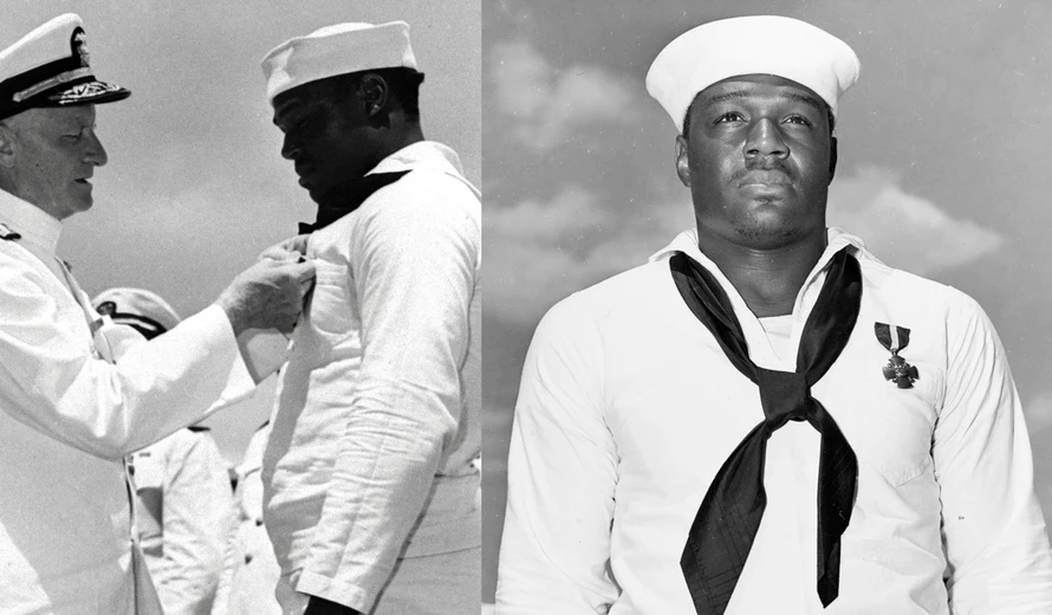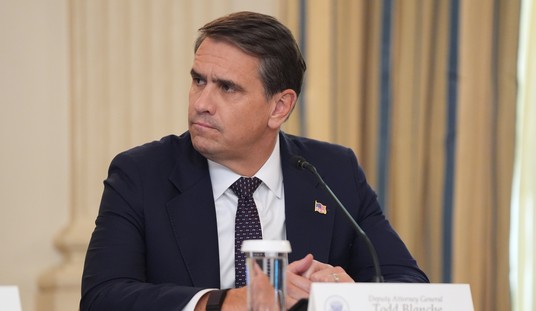“Remember Pearl Harbor” was the rallying cry of Americans during WWII. As we remember the devastating Japanese attack in Hawaii that forced America into the war, we should also remember several of the military men who demonstrated exceptional heroism that fateful day.
Then-President Franklin Roosevelt called Dec. 7, 1941, a “date which will live in infamy.” Out of a clear blue sky, while many if not most of the military and civilians at Pearl Harbor, Hawaii, were still asleep, Japanese planes suddenly appeared and turned idyllic surroundings into chaos.
Of course, not only was the attack on a publicly neutral nation condemnable, but it also ended up sealing Imperial Japan’s doom in WWII. But while Pearl Harbor was a day of grief and terror to so many, it also provided outstanding examples of heroism.
I would like to begin by sharing two stories I learned at the Freedom Museum in Manassas, Va., about Doris “Dorie” Miller (pictured above) and William Anderson.
Dorie Miller
Waco, Texas
Mess Attendant Second Class
U.S. Navy, USS West Virginia
First African American awarded the Navy Cross.
‘While at the side of his captain on the bridge, Miller, despite enemy strafing and bombing and in the face of serious fire, assisted in moving his Captain, who had been mortally wounded, to a place of greater safety, and later manned and operated a machine gun until ordered to leave the bridge.’
November 24, 1943, Miller’s ship, Liscome Bay, was sunk by a Japanese submarine. Listed as missing following the loss of that escort carrier, Miller was officially presumed dead November 25, 1944, a year and a day after the loss of Liscome Bay.
According to History.com, Miller had no weapons training when he took over that machine gun. “It wasn’t hard,” he said simply. “I just pulled the trigger and she worked fine… I think I got one of those Jap planes. They were diving pretty close to us.” The USS West Virginia sank due to the Japanese attack at Pearl Harbor, taking 66 sailors down with her.
William Thomas Anderson
Triangle, Virginia
Corporal, Radio Operator
U.S. Army Air Force [at the time, Army Air Corps], Field, Honolulu
Awarded the Certificate of Honor, Army Air Force; Purple Heart and Distinguished Service Cross.
‘While on duty as a radio operator Corporal Anderson voluntarily obtained a sub-machine gun and with utter disregard for his own safety took position in the open field without cover and continued to fire at enemy planes which were bombing and strafing the field, until he was mortally wounded. His unquestionable valor at the cost of his life is in keeping with the highest traditions of the military service and reflects great credit upon himself and the United States Army Air Forces.’
History.com has a whole list of remarkable stories from Pearl Harbor. These include Samuel Fuqua, who was knocked out cold by a bomb at first but still managed to get up again and evacuate himself and others from the doomed USS Arizona, and Chief Watertender Peter Tomich on USS Utah, who evacuated his boiler room crew and prevented a potential explosion before going down with his ship. Meanwhile, Chief Boatswain Edwin Hill was killed after trying to brave enemy fire to get the USS Nevada to the open ocean; while he died, his vessel survived to be used in the D-Day invasion.
Young Second Lieutenant Phil Rasmussen was awakened from sleep by the Japanese attack. Rasmussen didn’t even pause to change his purple pajamas before rushing out to find and take to the skies in an undamaged P-36 fighter plane! History.com:
His plane was slower and less maneuverable than the enemy Zeroes, but he quickly managed to shoot one of them down. He then crippled another plane before two Japanese pilots raked his P-36 with machine gun and cannon fire, leaving behind some 500 bullet holes. Another Zero just narrowly missed when it tried to ram him.
Rasmussen’s canopy was blown off and he briefly lost control, but he managed to right his damaged plane and make a miraculous landing without brakes, rudders or a tail wheel. The young pilot was awarded a Silver Star for his bravery and went on to serve in the Air Force for another 24 years before retiring as a colonel.
Chief Petty Officer John Finn jumped out of bed when the Japanese planes attacked Kaneohe Bay air station where his post was. He quickly got ready and went to commandeer a .30 caliber machine gun on base, where he kept up a “near-constant rate of fire against the strafing hordes of Zeroes” for some two and a half hours.
Finn never knew for certain if he hit any planes, but “I shot at every damn plane I could see,” he recalled in 2001. That’s right — despite receiving “more than 20 wounds from bullets and shrapnel during the battle,” including a broken foot and “incapacitated” left arm, Finn survived. He even returned to duty that same day! He lived to be 100 years old, and he received the Medal of Honor.
George Welch and Kenneth Taylor were Army Air Corps pilots awakened from sleep by the Japanese attack. Rushing to Haleiwa airfield in Taylor’s Buick, the two managed to get to their destination despite Japanese planes and were the first U.S. pilots to get into the air in their P-40 fighter planes.
Not many U.S. pilots were able to get in the air, and Welch and Taylor were facing off against hundreds of airborne enemies. But nothing could stop them — they even returned to restock ammunition once before taking off again! “By the time the attack ended, the second lieutenants had shot down at least six fighters and bombers between them. Both were awarded the Distinguished Service Cross for their high-flying exploits, and Taylor was given a Purple Heart for a shrapnel wound he received when his P-40 was struck by machine gun fire.“
Not all the heroes of Pearl Harbor were military. George Walters was a civilian dockyard worker “who manned a massive rolling crane positioned alongside the dry-docked battleship USS Pennsylvania.” Toward the start of the Japanese raid, Walters moved his crane to and fro in such a way that he shielded the USS Pennsylvania from “low-flying dive-bombers and fighters.” He even tried to use his crane’s boom to knock Japanese planes out of the air!
The Pennsylvania’s gunners soon realized how helpful Walters was — he could use his crane to guide gunners for accurate fire against the enemy, a successful collaboration. A Japanese bomb finally exploded on the dock and gave Walters a concussion, ending his risky heroics that day.
Today is a day that will live in infamy, but it was also a day when American men faced a hellish and stunning attack with such courage that their names live in our memories years after they died. Japan really had awakened a sleeping giant.










Join the conversation as a VIP Member